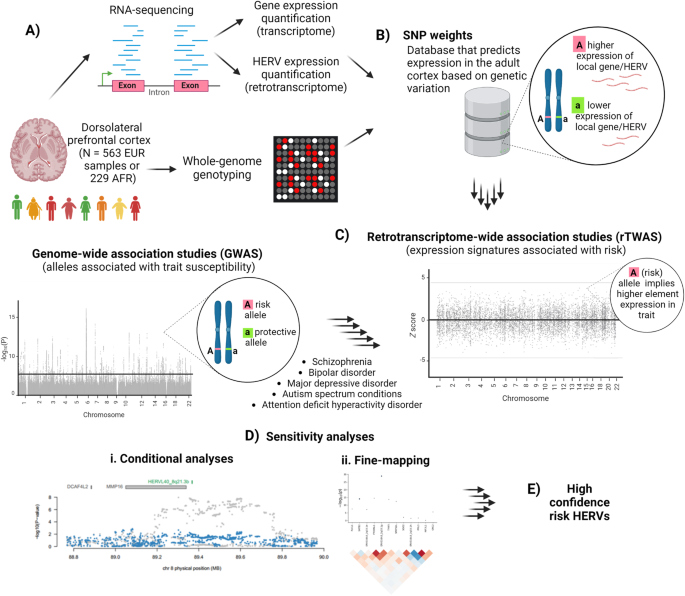Snippet: HERVs are “non-coding” sequences comprising of genetic material that originated from the infection of germ cells with ancient retroviruses during evolution, which now constitute approximately 8% of the human genome7,8,9. After the initial infections took place, these sequences inserted in the genome and multiplied themselves using a ‘copy-and-paste’ mechanism known as retrotransposition. At present, there is no evidence that these elements are currently retrotransposing, and studies suggest the majority of HERV insertions occurred over ~1.2 million years ago10,11. Instead, they have been hypothesised to regulate neighbouring genes, as most HERV sequences comprise of solitary viral promoters known as long terminal repeats (LTRs)9,12. However, many sequences additionally contain remnants of viral genes (e.g., gag, pol, env) that may encode additional biological functions, other than just regulating gene expression locally. For example, HERVs from the families W and FRD encoding env play a fundamental role in cellular fusion during the formation of the placenta and are now annotated as the syncytin-1 and syncytin-2 genes, respectively13. Critically, 14,968 HERV transcriptional units comprising of ancient viral genes flanked by LTRs have been annotated in the reference genome, from across 60 HERV families14. Although HERVs have been implicated in major psychiatric conditions15,16,17,18,19,20, most studies precede the comprehensive genomic annotation of these sequences. These studies also relied on methods that aggregate family-level expression data, such as Western blotting, reverse transcriptase quantitative PCR (RT-qPCR), or microarrays, and most also analysed very small sample sizes, meaning they were underpowered for the investigation of complex polygenic traits1. Finally, by employing case-control study designs, they were more likely to capture expression changes elicited by environmental factors associated with a psychiatric diagnosis, such as smoking or treatment21.
Here, we use a TWAS approach that considers neurological HERV expression estimated to precise genomic locations, to identify expression signatures associated with psychiatric conditions, while circumventing the limitations more prevalent in traditional case-control studies. Due to the inclusion of global HERV expression, or the ‘retrotranscriptome’, in this analysis, we call this approach a ‘retrotranscriptome-wide association study’ (rTWAS). We identify extensive HERV expression and regulation in the adult cortex, including in association with genetic risk for psychiatric disorders. We also detect co-expression networks linking the expression of canonical genes with HERVs, allowing us to broadly infer the function some specific HERVs may play in neurobiology. This work provides a rationale for exploring neurological HERV expression in complex neuropsychiatric traits.


No fucking way… Greg Bear was right? Read Darwin’s Radio/Darwin’s Children, y’all. Some good-ass modern sci fi.